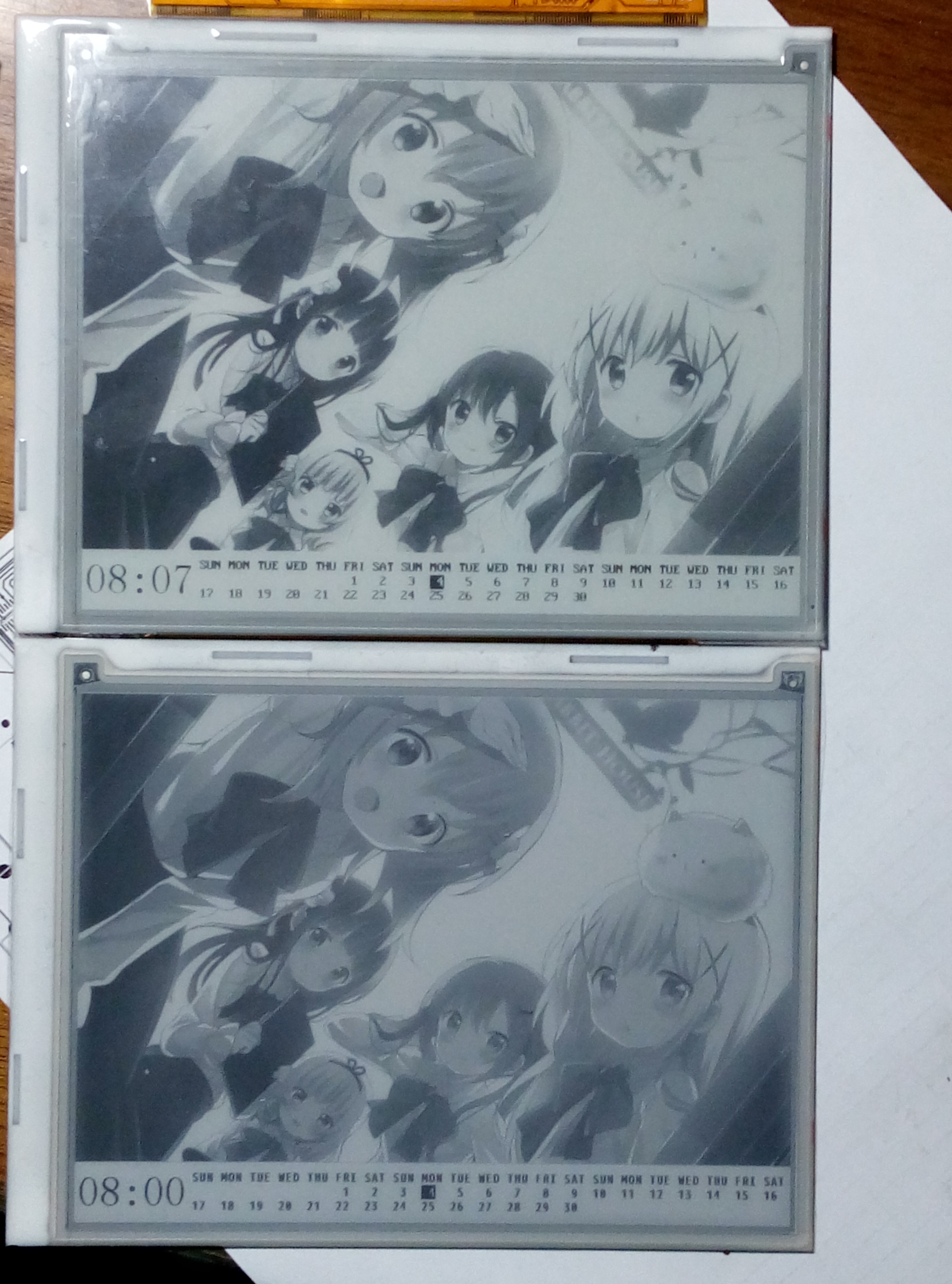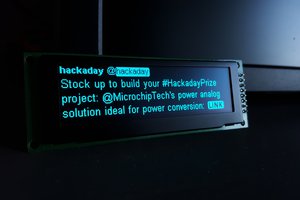Hardware specs:
Rev1:
Processor - STM32F407ZET6
Memory - 512K * 16bit SRAM
Rev1.1 (cost down):
Processor - STM32F407VGT6
Memory - All moved to internal SRAM
Screen - ED060SC4 800*600 EPD (working in 16-level greyscale mode)
Features:
Display the Date & Time of course.
Display BMP from SD card as a background.
Probably use it with Raspberry Pi?
Driving details:
Up to 16 shades of grey. Full refresh & partial refresh. Full 800*600 resolution
Fast response 1-bit mode available (Up to 10fps+, depending on the screen used)
See source code for detail. Software driven, no special controller used.
An write-up about the EPD driver program in the project log, check it out!
 Wenting Zhang
Wenting Zhang







 Mars
Mars
 Andrei Mehiläinen
Andrei Mehiläinen
 John
John
 Robert Poser
Robert Poser
This looks great!
Can anyone recomend a good source of info for getting started programming on e-ink? I have writen successfully for OLED before so I think it may be similar. I cannot wait to get tinkering with a screen like the one you are using.
Thanks,